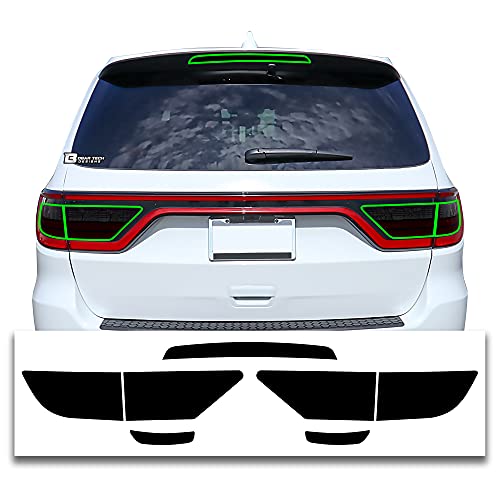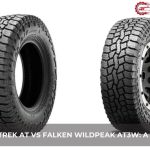We’ve all been there, cruising along in our Dodge Durango when suddenly a dashboard light flicks on. It’s easy to feel a pang of worry—what does this light mean? Are we about to break down? Before you let panic set in, we’re here to guide you through the maze of dashboard warning lights and symbols. Understanding these alerts can be the difference between a minor fix and a major repair, and we’re all about keeping things simple and stress-free.
Dodge Durangos, like any vehicle, use a language of symbols and lights to communicate with us. From the engine light to the tire pressure warning, each symbol has its own importance. We’re here to decode this language for you, offering a clear explanation of the most common dashboard lights and symbols you might encounter. This way, you’ll know exactly what your Durango is trying to tell you, ensuring a safer and smoother ride.
Understanding Dodge Durango Dashboard Warning Lights and Symbols
In light of the importance of decoding the dashboard warning lights and symbols on a Dodge Durango, let’s dive deeper into their meanings. With a focus on prevention and awareness, understanding these signals can drastically improve your driving experience by ensuring you’re well-informed about your vehicle’s condition at all times.
Firstly, we encounter the Check Engine Light, often symbolized by an engine outline. This light illuminates in yellow or orange, signaling potentially minor issues like a loose gas cap or more serious concerns such as a malfunctioning engine sensor.
Next, the Oil Pressure Warning is represented by an oil can symbol. It flashes when the oil pressure in the engine drops below the safe threshold, indicating the urgent need for an oil refill or a check of the vehicle’s oil pump.
The Battery Alert appears as a battery symbol and shines when there’s a charging system fault. This could mean the battery’s life is coming to an end or there’s an issue with the vehicle’s electrical system.
Another critical alert, the Brake Warning Light, shows either as the word “BRAKE” in all caps or an exclamation mark inside a circle. This light demands immediate attention, indicating potential brake system issues or simply that the handbrake is still engaged.
Additionally, the Airbag Indicator, symbolized by a seated figure with a circle in front, warns of a potential problem with the airbag system, suggesting that airbags may not deploy in the event of an accident.
Each of these symbols plays a vital role in vehicle maintenance and the driver’s safety. By promptly addressing these warnings, we can often avoid major repairs and ensure our Dodge Durango remains in optimal condition. It’s crucial to consult the vehicle’s manual or a professional mechanic if any of these lights come on, to understand the specific issue and the next steps to take.
Specific Dodge Durango Warning Lights
Diving deeper into Dodge Durango’s dashboard signals, we explore specific warning lights that are crucial for maintaining the vehicle’s performance and ensuring safety. Each symbol, with its unique implication, requires immediate attention or a check-up to prevent potential hazards.
- Check Engine Light: This light appears as an engine outline, indicating issues within the engine or emission system. It could signal anything from a loose gas cap to a more severe engine malfunction. If it’s flashing, it suggests a more urgent problem that needs immediate attention to avoid significant damage.
- Oil Pressure Warning: Shown as an old-style oil can, this light warns of low oil pressure. It’s vital to stop driving and check oil levels. Ignoring this light may lead to engine damage due to insufficient lubrication.
- Battery Alert: Depicted by a battery icon, this symbol signals an issue with the vehicle’s charging system. It does not necessarily mean a problem with the battery itself but possibly with the alternator or related components. Addressing this promptly ensures your Durango won’t unexpectedly fail to start.
- Brake Warning Light: This is displayed as an exclamation mark inside a circle, sometimes with “BRAKE” written around it. It alerts to potential issues with the braking system, which could range from low brake fluid to a malfunction within the anti-lock brake system (ABS). Safety dictates checking this system immediately if this light illuminates.
- Airbag Indicator: Appearing as a seated figure with a circled airbag, this warns of a fault within the airbag system. Airbags significantly reduce the risk of injury in an accident. Hence, any issue here needs quick professional diagnosis and repair.
Understanding these specific Dodge Durango warning lights and symbols ensures you’re informed about your vehicle’s health and safety status. Regular checks and professional maintenance, especially when these lights illuminate, help keep your Durango running smoothly and safely on the road.
Troubleshooting Tips for Dodge Durango Dashboard Lights
Navigating the maze of dashboard lights on your Dodge Durango doesn’t have to be a daunting task. Understanding these signals is essential for maintaining vehicle health and ensuring safety. If you notice any warning lights illuminated on your dashboard, here are some troubleshooting tips that might help before you head to the mechanic.
Check Engine Light
When the Check Engine Light appears, first check your gas cap to ensure it’s tight. A loose cap sends an error that could trigger the light. If tightening it doesn’t clear the light after a few drives, consider using an OBD2 scanner to check for engine codes. Remember, a blinking light indicates a more severe issue, urging you to stop driving and seek professional help immediately.
Oil Pressure Warning
Seeing the Oil Pressure Warning light means you should stop the vehicle and check the oil level using the dipstick. If the oil is low, adding the correct type of oil for your Durango might resolve the issue. Should the light stay on with adequate oil levels, the issue could be more complex, like a faulty oil pump, necessitating a mechanic’s expertise.
Battery Alert
The Battery Alert signifies charging system issues. Start by inspecting the battery terminals for corrosion or loose connections. Cleaning the terminals and ensuring a snug fit can sometimes fix the problem. If the light remains on, the battery itself or the alternator might need replacement, requiring professional assessment.
Brake Warning Light
If the Brake Warning Light comes on, check the brake fluid level first. Low levels can trigger this light, and topping off with the recommended brake fluid for your Durango might extinguish it. Additionally, consider whether the handbrake is fully released. Persistent illumination after these checks suggests a deeper brake system issue, such as worn brake pads or leaks, needing immediate professional attention.
Airbag Indicator
An illuminated Airbag Indicator means the vehicle’s safety system needs checking. While you can’t troubleshoot airbag systems at home due to their complexity and safety risk, avoiding delays in getting a professional diagnosis is critical. Airbags are a vital safety feature, and any fault requires swift action.
In any case, while some problems can be temporarily addressed by owners, consulting with a certified mechanic ensures your Dodge Durango remains in safe, optimal condition. Regular maintenance and promptly addressing dashboard warnings help avoid larger, more costly repairs down the road, keeping you and your vehicle safe on your journeys.
How to Reset Dodge Durango Dashboard Warning Lights
Resetting the Dodge Durango’s dashboard warning lights usually requires a few simple steps. Nevertheless, remember, if a light comes back on after resetting, it’s crucial to get your vehicle checked by a professional to prevent further issues. Here, we’ll guide you through the process.
Turn Off the Ignition
First, ensure your vehicle is completely turned off. Removing the key from the ignition or pressing the stop button if your Durango has keyless start ensures that all systems are off, which is necessary for a proper reset.
Wait a Few Moments
After turning off the ignition, wait about a minute. This pause allows the vehicle’s systems to fully shut down and reset, making the next steps more effective.
Restart the Engine
Restart your Durango. Turning the key to the “on” position without starting the engine lets the system check and reset any fault codes that may not be active. If the issue was temporary, this might clear the warning light.
Check the Dashboard
Observe the dashboard as you start the engine. If the reset was successful, the warning lights should turn off after a few seconds, as part of the system’s self-check process. If any lights remain on, it indicates a need for further investigation or professional service.
Consult the Owner’s Manual
For specific warning lights, such as the Airbag Indicator or Check Engine Light, consulting your Dodge Durango’s owner’s manual can provide additional reset procedures or precautions. Some systems might have unique reset requirements.
Seek Professional Help if Necessary
If a dashboard warning light remains illuminated after attempting a reset, it’s a sign that your Durango needs professional attention. Ignoring these warnings can lead to severe damage and safety risks.
By following these steps, resetting the dashboard warning lights on your Dodge Durango can be a straightforward process. However, ensure to address the underlying issues highlighted by these warnings to maintain your vehicle’s safety and performance.
Preventive Measures to Avoid Dashboard Warnings
In addressing the crucial aspect of avoiding dashboard warnings on a Dodge Durango, we emphasize the importance of routine maintenance and attentive driving practices. By following these preventive measures, drivers can significantly reduce the likelihood of encountering warning lights and ensure their vehicle operates efficiently and safely.
- Regular Maintenance Checks: The cornerstone of Dodge Durango care involves adhering to a regular maintenance schedule. This includes oil changes, brake inspections, fluid level checks (coolant, brake fluid, power steering fluid, etc.), and tire inspections for wear and pressure adjustments. Scheduled maintenance not only keeps the vehicle in top condition but also helps identify potential issues before they trigger dashboard warnings.
- Promptly Address Check Engine Light: If the Check Engine Light comes on, it’s imperative to address it immediately. Often, the cause might be something simple like a loose gas cap, but it can also indicate more serious issues. A swift diagnostic check can pinpoint the problem and allow for corrective measures before it escalates.
- Battery Care and Maintenance: Since a faulty battery can trigger various warning lights, keeping the battery terminals clean and ensuring the battery is in good condition are vital. Regular checks will help avoid unexpected battery alerts and ensure the vehicle starts reliably.
- Monitor Tire Pressure: The Tire Pressure Monitoring System (TPMS) light illuminates when tire pressure is too low, posing a risk to driving safety. Regularly checking and adjusting tire pressure according to the manufacturer’s recommendations helps prevent this warning light from coming on and extends tire life.
- Heed Warning Signs: Lastly, never ignore any dashboard warning lights or unusual vehicle behavior. Early detection and intervention can prevent minor issues from developing into major repairs. If unsure about a warning light or if it persists after troubleshooting, consult a professional mechanic or a Dodge dealership.
Conclusion
We’ve covered the crucial dashboard warning lights and symbols in the Dodge Durango and shared some valuable troubleshooting tips. Remember, keeping an eye on these indicators and following our preventive measures can significantly reduce the chances of unexpected issues. Regular maintenance isn’t just about avoiding warning lights; it’s about ensuring your Durango runs smoothly and safely for years to come. So let’s not wait for the lights to tell us there’s a problem. By being proactive, we can enjoy peace of mind on every journey. Happy driving!
Related Posts:


















